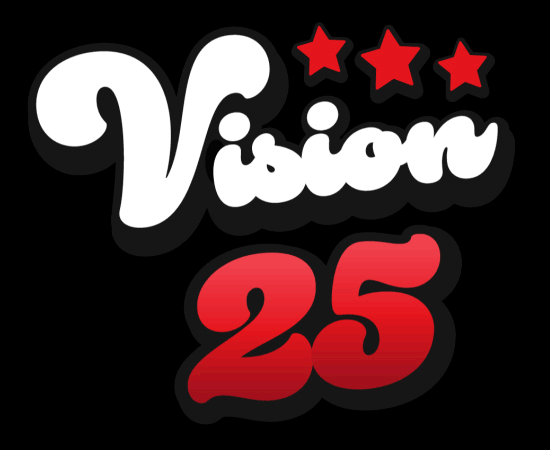Strategies to Power MSP Growth
Last week at Channel All-Stars, The 20’s CEO Tim Conkle participated in a panel discussion on ‘Strategies to Power MSP Growth.’ Here’s a recap of the stimulating conversation, just in case you missed the event!
It’s been one week since Channel All-Stars, a large virtual MSP event hosted by Channel Program. Our own Tim Conkle (CEO at The 20) spoke at the event, participating in a panel discussion on “Strategies to Power MSP Growth.”
Channel veteran, Kris Blackmon (Chief Channel Officer at JS Group), served as moderator, and joining Tim on the panel were Joe Alapat (Founder & CEO at Liongard) and Steve Petryschuk (Product Strategy Director at Auvik).
When you get such prominent and insightful industry voices in one room, the ensuing conversation is bound to be illuminating — and a lot of fun! Needless to say, this panel didn’t disappoint.
In fact, it was packed with so many actionable insights for growth-minded MSPs, we’d be remiss not to share some of the discussion highlights with our MSP community and blog readership. So just in case you missed the All-Stars event — or if you simply want to revisit some of the awesome content — here’s a recap of the discussion between Kris, Joe, Steve and Tim …
Cha-Change = $Cha-Ching!
It’s no secret that the managed IT services industry is growing and maturing — but not all MSPs are developing at an equal rate. In broad strokes, there are those MSPs capitalizing on market trends and fresh opportunities — the “leaders” — and then there are the MSPs eking out what little growth they do manage to achieve, and struggling to remain competitive — the “laggers.”
So, what separates the leaders from the laggers in the MSP space?
This question kicked off Wednesday’s panel discussion, and a consensus quickly arose among the three panel members: being successful as an MSPs means learning to embrace change.
The MSP world is constantly changing, and lately, at breakneck speed. As technology evolves, so too do customer expectations. Keeping pace with all of this change — and staying competitive — means stepping outside of your comfort zone. It means trying new things, discarding old methods, and innovating and automating at every turn.
As CEO at The 20, Tim has had the opportunity to guide hundreds of MSPs on their respective growth journeys. What has all of that experience taught him? Without hesitation, Tim shared that the “number one difference between MSPs in The 20 that actually knock it out of the park and those that don’t” is that the former are willing to change.
Getting Specific: How & What to Change
What should MSPs be looking to change exactly? The panel turned its attention next to specific areas that MSPs should be looking to evolve to win new business and sustain growth in the coming years.
Make Marketing Matter
The panel agreed that one area MSPs continue to overlook — although many are coming around, and doing so quickly — is marketing. It’s been said many times, but it bears repeating: MSPs need to take marketing seriously.
We’re talking about a fundamental shift in mindset here. Getting serious about marketing doesn’t mean doing one or two things and then sitting back, expecting the leads to come rolling in. It means committing to marketing as a core engine for growth, and sticking with it.
Preferring Recurring
The panelists also discussed the importance of recurring revenue. Long-term, steady growth comes from recurring revenue, not projects. A lot of MSP owners don’t fully embrace this truth — or they do, but don’t always make decisions from an ‘MRR-first’ perspective.
As an MSP owner, you should be looking to boost recurring revenue and wean off project work, but don’t expect to make this transition overnight. It takes time, effort, and a sound strategy.
It also takes saying ‘no.’ In the early days of growth, MSPs can easily fall into the “all revenue is good revenue” mindset — and with good reason. But as Joe reminded us on Wednesday, “never saying ‘no’ to a customer can get you in trouble.”
Saying ‘yes’ to every MRR opportunity can also get you in trouble. Just as not all revenue is good revenue, not all MRR is good MRR. A lot of MSP owners chase MRR at all costs, which ends up diluting their focus and spreading resources too thin. Look to boost MRR, but do so with an overarching gameplan. To quote Joe, you have to be intentional.
Learn to Let Go!
A lot of MSP owners start out filling every role at their business. And when you’re just starting out, you can be a one-person band; it will work … until it doesn’t. At a certain point, you have to give up some control, and let other people manage parts of your growing business.
Some MSP owners are slow to accept this. They get stuck in the mode of trying to do everything themselves — sales, employee training, engineering, marketing — even when it becomes stressful or downright unmanageable.
But it’s like Steve said during Wednesday’s panel, “taking your business to the next level rakes a different skill set.” In other words, you need the right people. This holds true whether you’re trying to make the jump to $500k, $1M, or $10M ARR. Surrounding yourself with the right team is paramount to sustained entrepreneurial success.
Steve encourages MSP owners to figure out their own roles first. Pick a hat, and wear it. Once you know what your role is, you can start building an elite team of people with skills that complement your own.
Keep Your Eyes on KPIs
The panel turned to an important topic next: metrics. Your MSP should be using a variety of metrics to keep track of performance levels, instill a culture of continuous improvement, and identify problem areas. And most likely you already are. But Kris posed an important question to panelists that really got the conversation going: which critical metrics do MSPs commonly miss?
Tim responded with a hard truth: MSPs miss a lot of them. He elaborated that MSPs tend to be great at tracking day-to-day service, but when it comes to the financial side of things, they’re often “missing the whole box.”
You want to get granular with your metrics. What are your most profitable contracts? Which clients are actually costing you money? If you look at elite MSPs, they track profitability at the level of individual contracts/clients. Do the same.
And when a client is costing you money, you have to decide: can this be fixed? If the answer’s ‘no,’ you’ve got to let them go. KPIs and other metrics need to give you data to make hard decisions, or else it will be left to emotion, a point Tim emphasized to the panel.
Not all KPIs are created equal, and it’s important to choose the right KPIs for your MSP. Steve shared an important point with the panel on the topic of selecting metrics: you want to strike a balance between leading and lagging indicators. Lagging indicators shine a light on past performance, and are certainly important — you want to know how your MSP has been doing, and where it’s at.
But you also want data that is forward-looking: leading indicators that give you some insight into the future, and the direction your MSP is heading. Metrics such as Net Promoter Score and CSAT Score are examples of leading indicators that can help you predict churn and retention, and even avoid negative outcomes — when you know a client relationship is suffering, you can take action to improve the situation.
Summing up the panel’s rich discussion of KPIs: get granular, focus on profitability, and look to the future as well as the past.
Nail Scale
A panel on MSP growth strategies wouldn’t be complete without some talk of scalability. If you’re serious about growing your MSP, you have to make scalability a priority. What works with just a handful of clients won’t work with a large client base. At a certain point, your processes — if they’re not streamlined, efficient, and replicable — will break down.
Joe shared a great way to think about scalability: think about turning as many of your MSP’s processes as possible into “managed workflows,” which Joe defined as something that “just runs.” He compared managed workflows to cattle, as opposed to pets, in that they can be easily managed en masse — a terrific metaphor that really captures the essence of scalability!
Final Thoughts
Channel All-Stars was an incredible event with an electrifying special guest in Gary Vaynerchuk, and a stellar lineup of keynotes and panelists. The event truly was a “celebration of the energy that powers growth,” and a reminder that a big source of that energy is community. When we get together and lift each other up, not only do our individual businesses benefit, but also, the IT industry as a whole.
Speaking of getting together — have you registered for The 20’s annual VISION conference yet? VISION ’22 is going to be a blast, with exclusive content for growth-minded MSPs, a fantastic speaker lineup including an incredible keynote (soon to be announced), networking opportunities galore, and the MSP party of the year. It all takes place at the beautiful Omni Frisco Hotel at The Star, home of the Dallas Cowboys World Headquarters.
Follow this link to register for VISION ’22 today!


